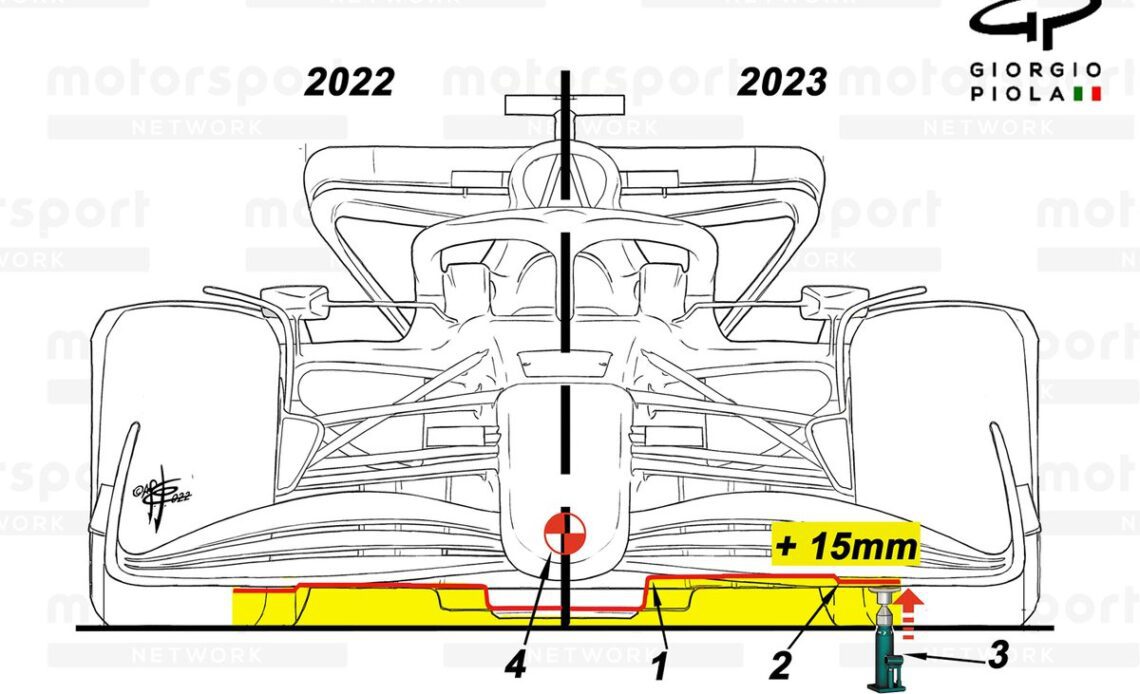Although the event is being hailed as the 2023 car launch, Red Bull has history from last year of bringing out a rebranded old car and pretending it is a shiny new model.
The likelihood is that, with the first F1 test still several weeks away, what appears in New York will at best be a hybrid of the 2022 and 2023 models, featuring some old and new elements. It will then, almost certainly, be vastly upgraded when it hits the track in Bahrain.
Irrespective of what is revealed later, this season will be an interesting one for spotting just how much development teams have done with their cars.
Last year was a total revamp which meant everyone started with a clean sheet of paper. For 2023, there has been no major tweak to the rules. Instead teams will have to combine lessons learned from the 2022 campaign with some subtle changes that will influence floor designs – and that could have wider consequence for aerodynamics.
The trigger for this area of change was the mid-season intervention that the FIA had to make to address porpoising problems. The pre-Canadian GP technical directive, TD-039, sought to reign in some of the tricks that teams had engaged in to deal with the issue.
It also looked to help soften the blow for drivers. A new ‘Aerodynamic Oscillation Metric’ was introduced, with the intention of preventing teams from running their car so low that it would trigger the aerodynamic anomaly.
Teams are now required to mount a dedicated accelerometer, manufactured by the FIA’s designated supplier, in order that this can be monitored.
Beyond what the FIA did last year, a handful of changes to the regulations have sought to eradicate the problem further, with teams forced to raise the outermost portion of the floor by a further 15mm, whilst load tests will now be conducted at six different points along the floor’s length.
2023 Proposal rules front view
Photo by: Giorgio Piola
While there’s an expected lap time loss associated with these surface changes of around two-to-three tenths, it’s unlikely that the teams won’t already have that in their pocket and maybe more come the start of the season.
Teams always see these changes as an opportunity to one-up their rivals after all, rather than dwelling on the losses they’ve accrued as a result.
The car’s mass also looks set to be reduced for 2023, having ballooned well beyond the original target of 790 kg that was originally envisaged and settling instead on 798 kg.
Most of the grid…
Click Here to Read the Full Original Article at Motorsport.com – Formula 1 – Stories…

